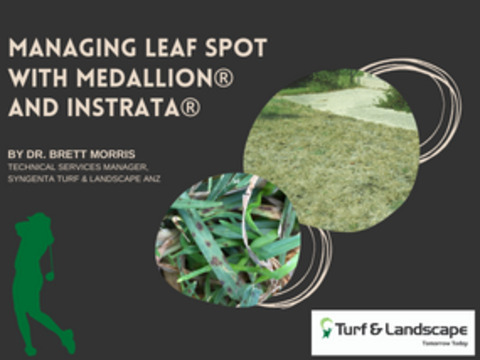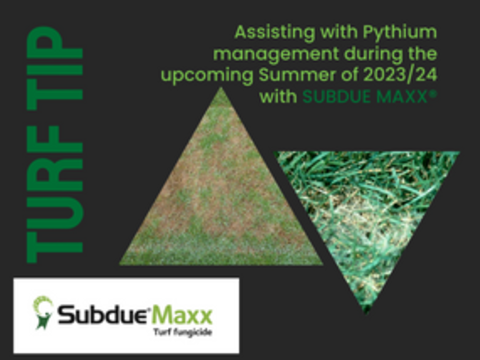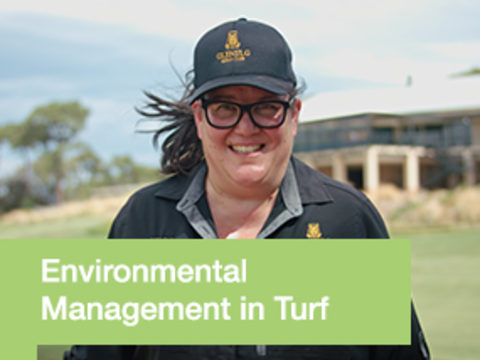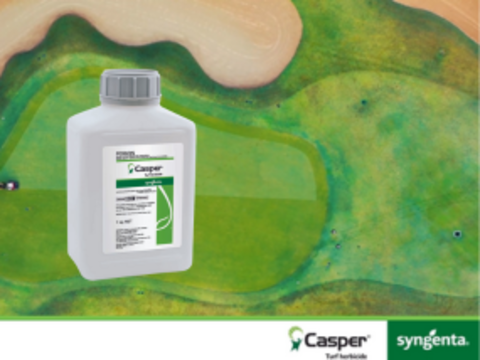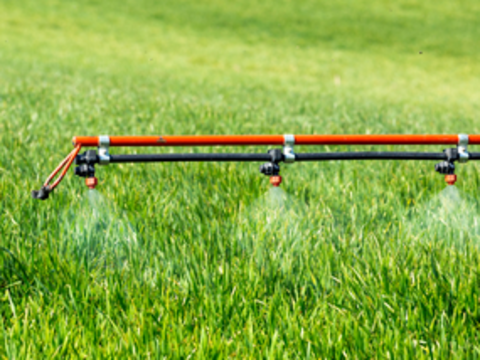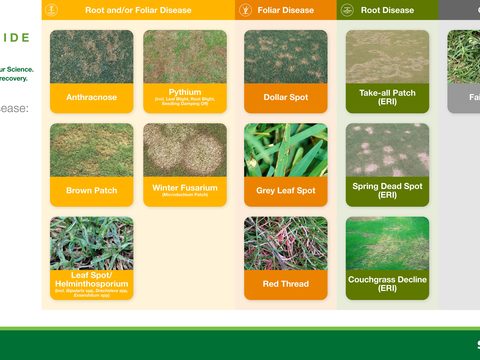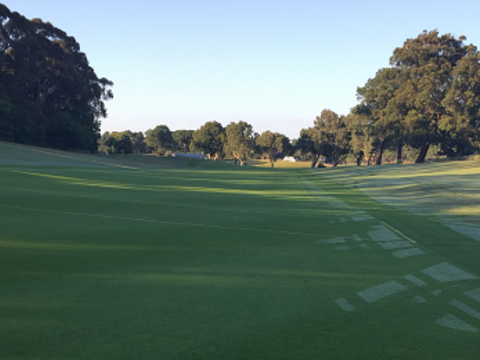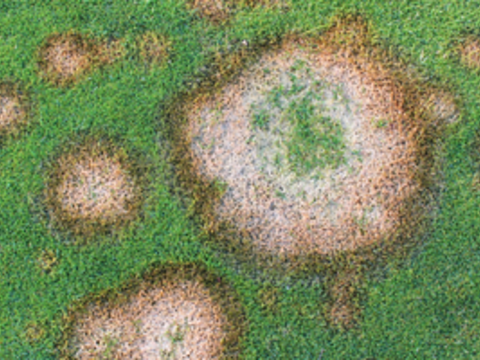Knowing your grubs means greater control with ACELEPRYN
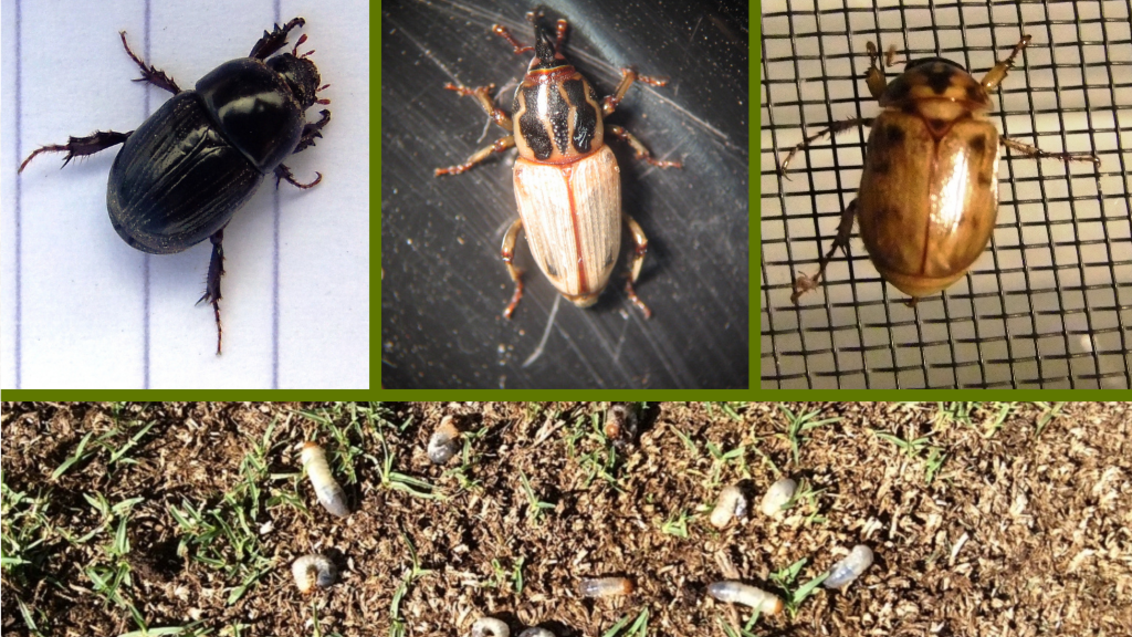
Turf professionals know that being proactive about grub control is not a luxury, but a must.
This is especially true if you manage a sports field, park or green space: all common targets for grubs such as the larvae of African Black Beetle and Billbug. When these pests attack the turf’s roots, the entire plant, often already under stress from reduced water allocation and public wear and tear, is compromised. A preventative strategy is needed to protect the entire green space from ruin – one that is based on knowledge and extensive research.
One solution that fits the bill is industry-leading insecticide ACELEPRYN. Once you have accurately identified the grub you are dealing with, applying ACELEPRYN strategically offers reliable residual protection for up to 6 months.
To get you started, here is what you need to know about the most destructive pests and how to achieve season-long with new ACELEPRYN GR, a granule formulation or the original ACELEPRYN, which comes in liquid formulation.
African Black Beetle
African Black Beetles can reach plague populations after consecutive long and dry summers. Mating occurs in spring; 2 to 5 weeks later the larvae hatches, feeds on decaying organic matter, then moves on to plant roots. Peak damage usually occurs around December and January, so it’s important to get on top of infestations early.
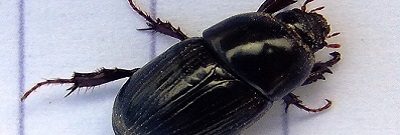
Identifying characteristics:
- Adults are shiny black beetles that are 12-15mm long.
- Males have a thickened tarsus (lower leg segment) for digging.
- Grubs have distinctive orange spiracles along abdomen and thorax. Their raster is a transverse narrow slit.
Symptoms of infestation in turf:
- Turf takes on drought-like symptoms in irregular patterns, due to root damage and an inability to access moisture from the soil
- When severely damaged, patches of turf can be peeled back to expose large numbers of feeding larvae
Control:
To control African Black Beetles, apply ACELEPRYN preventatively in spring around early to mid-October at 750mL/ha for 3 months, or at full rate of 1.5L/ha for season-long control (up to 6 months). For ACELEPRYN GR, the application rates are from 75 kg/ha to 150 kg/ha. The best control is achieved during the first and second instar stage when the larvae is smaller.
Billbug
Billbug can be hard to detect until the population in the turf reaches damaging numbers. Adults deposit their eggs in the stem of the plant. The larvae hatch after 2 weeks, exit the plant and feed on the stem and roots. This is when the most severe damage is inflicted on turf.
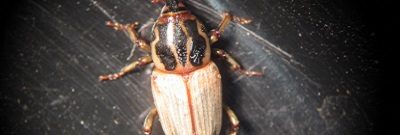
Identifying characteristics:
- Billbug larvae (also known as ‘La Plata Weevil’) are up to 10mm long. They are legless, creamy-white ‘C’ shaped larvae with an orange head capsule.
- Young adults are up to 10mm long and have dark brown stripes on their wing casings.
- Mature adult billbug weevils are dark brown/black and have a distinctive bill-like snout and elbowed antennae.
- This pest is a common problem in kikuyu grass.
Symptoms of infestation in turf:
- Billbug-affected turf looks similar to turf affected by fungal diseases like Dollar Spot. The plants initially turn yellow then if left untreated, eventually become brown and die.
- You can inspect turf for Billbugs by pulling on leaf blades to see if they easily lift off the soil. The stems of affected turf plants are hollow and filled with sawdust-like material. They break off at the crown, and tufts can be easily pulled out of the ground.
- If left untreated the plants are completely severed from the roots
Control:
Early intervention is essential to controlling Billbug. To prevent damage in late spring, apply ACELEPRYN or ACELEPRYN GR when you first observe overwintered adults. This can be achieved with minimal disruption to the community and reduced PPE requirements for staff, as both are exempt from poison scheduling.
Argentinian and Pruinose Scarab
The Argentinian Scarab population builds up in turf after several consecutive hot dry summers. Adults emerge at the beginning of summer. Females burrow into the soil and deposit eggs around late December to early January; the larvae hatch 2 to 4 weeks later and begin to feed on turf roots.
The Pruinose Scarab is similar to the Argentinian Scarab, but native to Australia. Adults emerge from the soil in early spring, fly to eucalyptus trees to mate, then return to the soil to lay eggs. The larvae then hatch and burrow into the soil for 8 to 10 months before emerging the following spring.
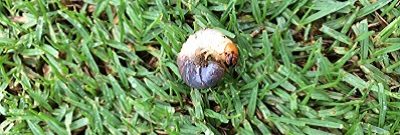
Identifying characteristics:
- Argentinian Scarabs are similar in size and shape to African Black Beetle, but are a mid-tan colour with subtle striping on the hard outer covering of their wings. In their larval stage, they are white or creamy white, soft-bodied curl grubs that are usually up to 25mm long.
- Pruinose Scarab adults are spherical in shape and around 12mm long with a hard outer casing covering its abdomen. They are usually found swarming soon after dusk.
Symptoms of infestation in turf:
- In their larvae stage, scarabs destroy turf root systems by chewing them off in the shallow soil, just below the thatch. The damage often looks like drought stress, as the plant’s ability to get moisture from the soil is lost. The plant wilts and turns yellow; the turf becomes loosely attached to the soil as the roots are consumed. Once heavy damage takes place, the grass is spongy and easy to pull away from the soil surface.
- By the time symptoms are observed, the damage is done and significant recovery may be required. Prevention is key.
- Secondary damage with birds and animals tearing surfaces to feed on larvae and adults is common.
Control:
ACELEPRYN is effective against the first and second stage of the scarab’s lifecycle. A single application at 1.5L/ha in early spring can provide control for the entire season. Apply ACELEPRYN GR at a rate of 150 kg/ha for season long control and the granular formulation provides a no-spray option that is convenient, flexible and easy to use – simply apply through a traditional fertilizer spreader and water into the turf.
For more information on how ACELEPYRN (granule or liquid formulation) can protect your turf from grubs and caterpillars, please call 1800 022 035 or speak to your local Syngenta agent.


